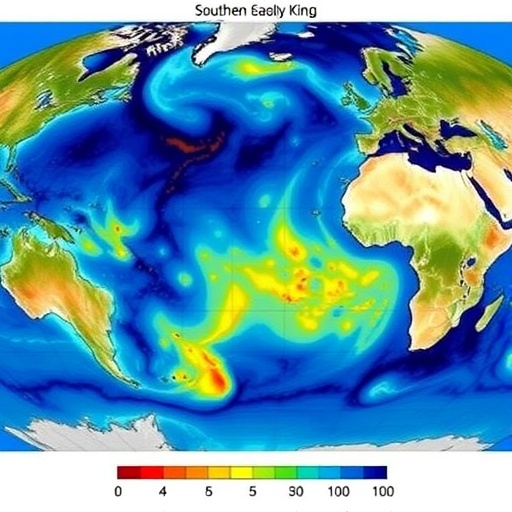The Earth’s climate narrative over the past several hundred millennia is one marked by oscillations between glacial and interglacial phases, punctuated by variations in global temperature and atmospheric composition. A particularly enigmatic chapter in this saga is the series of interglacials occurring between 800,000 and 430,000 years ago, often referred to as the “lukewarm interglacials.” These warm periods were characterized not by the relatively high atmospheric CO2 concentrations typical of later interglacials but rather by markedly lower levels, hovering around 240 to 260 parts per million (ppm). This contrasts sharply with subsequent interglacial phases where atmospheric CO2 concentrations rose to 280 to 300 ppm, and today, where human activities have driven CO2 beyond 420 ppm. Understanding why these earlier warm intervals remained cooler despite being interglacial has long puzzled climate scientists, but recent cutting-edge research sheds new light on this climatic mystery, implicating the Southern Ocean as a principal agent.
Central to the emerging understanding is the concept of ocean stratification in the Southern Ocean, a vast expanse of ocean encircling Antarctica, which plays an outsized role in the Earth’s carbon cycle and climate regulation. Researchers led by Dr. Huang Huang have harnessed a novel laser-based analytical technique to probe deep-sea ferromanganese crusts extracted from the Antarctic continental margin, approximately 1,600 meters beneath the ocean surface. These crusts serve as slow-growing, high-fidelity recorders of seawater chemistry, encapsulating isotopic fingerprints that trace oceanic conditions over timescales spanning hundreds of thousands of years.
The methodology employed represents a leap forward in paleoclimate reconstruction. Utilizing the two-dimensional laser ablation technique, minuscule analytes within the crust are precisely vaporized and subjected to isotopic analysis via laser ablation inductively coupled plasma mass spectrometry (LA-ICP-MS). This allows for unparalleled temporal resolution in capturing isotopic signatures—most notably of lead isotopes—indicative of past ocean water mass mixing and stratification dynamics. Moreover, the development of absolute dating methods for these crust layers imbues the isotopic data with robust chronological control, enabling researchers to correlate oceanographic changes with global climate transitions with an unprecedented degree of accuracy.
The findings articulate a compelling narrative: during the lukewarm interglacials, the Southern Ocean exhibited markedly enhanced stratification. This stratification means that vertical mixing between the upper, sunlit layers and the deep ocean diminished, effectively sequestering a significant reservoir of carbon within deep waters rather than allowing it to vent into the atmosphere. The direct consequence of this reduced efflux was a lower atmospheric CO2 concentration compared to later interglacial periods. With diminished greenhouse warming from CO2, Antarctic temperatures remained cooler, likely sustaining larger Antarctic ice sheets and exerting a global cooling influence.
This dynamic underscores the Southern Ocean’s role as a climate system regulator: its water column structure and the degree of stratification act as a thermostat for atmospheric carbon. Reduced mixing in the ocean interior locks away carbon, modulating greenhouse gas concentrations and, consequently, global temperature. The enhanced stratification during the earlier warm periods stands in stark contrast to post-Mid-Brunhes Event interglacials—after some 430,000 years ago—when Southern Ocean mixing increased, higher CO2 levels accumulated in the atmosphere, and the global climate experienced warmer conditions.
The Mid-Brunhes Event itself emerges as a pivotal climatic transition, demarcating the shift from these lukewarm, stratified ocean conditions to a regime of warmer interglacials marked by stronger atmospheric CO2 accumulation and longer warm intervals. This event’s underlying causes remain a subject of active research, but the new isotopic evidence from Southern Ocean sediments provides a critical piece of the puzzle by linking ocean circulation changes directly to global carbon cycle dynamics.
Significantly, these insights gained from ancient oceanographic processes also carry implications for understanding contemporary and future climate behavior. The Southern Ocean continues to be a major sink for anthropogenic carbon dioxide, and its stratification state influences the planetary heat and carbon budgets. Hence, unraveling how ocean layering and mixing have evolved during past climate fluctuations informs predictive models assessing how global warming might affect ocean carbon uptake moving forward.
The innovative laser ablation strategy has also unleashed a new era of high-resolution paleoclimate reconstructions. This technique’s precision enables scientists to discern rapid variations in ocean layering and mixing, previously obscured in traditional sediment analyses limited by coarser temporal averaging. Consequently, future studies may leverage this methodology to elucidate short-term climatic shifts and improve understanding of abrupt climate events driven by ocean-atmosphere interactions.
Beyond the data’s immediate revelations, the study exemplifies the scientific synergy between advanced geochemical analytics and climate modeling, linking proxy records with theoretical frameworks to decode Earth system processes. By bridging observational evidence and computational simulations, researchers can better quantify the feedback mechanisms controlling atmospheric CO2 and temperature.
In effect, the story of the lukewarm interglacials pivots around the Southern Ocean’s capacity to regulate Earth’s carbon balance via ocean stratification. Its influence shaped climatic conditions in a way that kept atmospheric CO2—and thus global temperatures—lower than later warm periods even though these times were characterized by intervals of global warmth. Understanding these mechanisms provides critical context to contemporary climate change, emphasizing the need to closely monitor and model Southern Ocean dynamics as part of global climate strategies.
Finally, the study heralds a hopeful outlook for climate science: technological innovation in geochemical analysis can unlock previously inaccessible archives of Earth’s climatic past, informing robust predictions about our planet’s future. The fusion of precise isotopic measurements with climate simulations offers a potent toolkit to decode the intricacies of ocean-atmosphere feedbacks that govern the Earth’s climate system.
Subject of Research: Not applicable
Article Title: Enhanced deep Southern Ocean stratification during the lukewarm interglacials
News Publication Date: 6-Oct-2025
Web References: 10.1038/s41467-025-63938-6
Keywords: Oceanography




